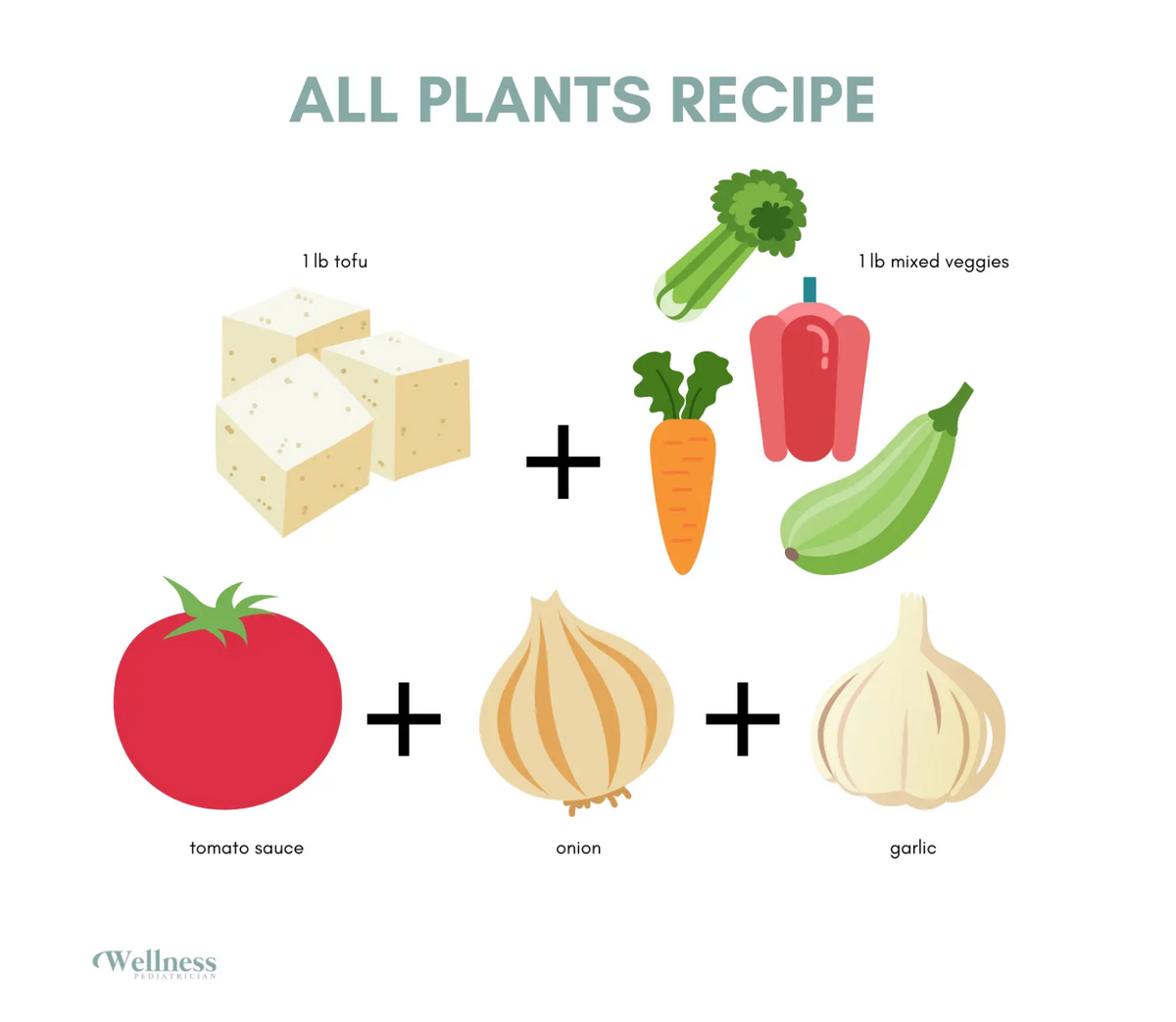
Transitioning to a plant-based diet: How to slowly eliminate ground meat in a recipe
|
|
Time to Read: 5 min
|
|
Time to Read: 5 min
So you’ve made a decision to reduce your meat consumption by transitioning to a plant-based diet, but you aren’t quite sure how to start. You have so many questions. Will my family eat what I make? Will I end up making a second meal when they refuse? Will it even taste good? Will we miss eating meat? Will I ever get to eat the foods I previously enjoyed? Is this even possible?
It can be overwhelming to the point where you give up before you have even started. I know. I’ve been there.
Over the years, we have tried, then stopped, then tried again, then stopped again.
Here’s the thing. It doesn’t have to be an all or nothing decision. You can shift course at any time if it isn’t working for your family. There is more than one way to make this transition and remember this is a marathon, not a sprint.
Founded by a pediatrician and mom of three
Stainless steel is the only kid-friendly material recommended by the American Academy of Pediatrics
We are guided by a Scientific Advisory Council comprised of environmental and medical experts, guiding us in creating the safest products, following the latest science and promoting policy to protect human health and our planet
Want to know more? Check out our story and our products.
Here is an example of how you can make a slow step-wise transition to “de-meatify” a dish by slowly eliminating ground meat in a recipe by dilution.
One of our family staples before we started our plant-based journey was spaghetti with bolognese sauce, AKA meat sauce. The original recipe included 2 lb of meat - lean ground beef and sweet Italian pork sausage. The only vegetable in the dish aside from tomatoes was onion and garlic.
The first change I made was to substitute the ground beef with ground chicken/turkey and the pork sausage with chicken sausage. I made it this way for years.
The next thing we did was make a 50/50 ground chicken/turkey and tofu mixture to substitute the 100% meat mixture. I use either extra firm tofu or high protein tofu since it is drier and crumbles easily. There was still 2 lb of this mixture in the sauce.
You can reduce the meat/tofu mixture to 1 lb and substitute the other 1 lb with vegetables such as carrots, celery, bell pepper, and zucchini.
Hooray! You did it! You have successfully weaned your tastebuds slowly to accept a pasta sauce now packed with vegetables. It worked because it wasn't a complete 180 degree change. This concept of slow change works with all kinds of recipes when you are trying to make substitutions of animal-based ingredients with plant-based ingredients. This method has worked best for my family and I hope it works for yours. Give it a try!
Cherie Chu, MD DipABLM, is a board-certified pediatrician and a certified diplomate of lifestyle medicine. She is passionate about helping children learn healthy lifestyle habits because of the immeasurable benefits of doing so in childhood and beyond.
Dr. Chu is the founder of Wellness Pediatrician, an educational website dedicated to wellness in children through lifestyle medicine. She currently practices outpatient general pediatrics in San Diego where she incorporates her knowledge of lifestyle medicine into her daily interactions with her pediatric patients and their families. She is also the mother of twins and credits her children as being her greatest teachers.
The American Academy of Pediatrics (AAP) released a report in July 2018 suggesting ways that families can limit exposure to certain chemicals at mealtime, including “the use of alternatives to plastic, such as glass or stainless steel, when possible.” The report explained that “…some additives are put directly in foods, while “indirect” additives may include chemicals from plastic, glues, dyes, paper, cardboard”. Further, “Children are more sensitive to chemical exposures because they eat and drink more, relative to body weight, than adults do, and are still growing and developing.” While stainless steel items meet the recommendation to avoid plastic products in children, Ahimsa® products have the obvious advantage of not breaking like glass.
According to the Steel Recycling Institute, steel can be recycled over and over and over again without losing its integrity and requires less energy to recycle than to make anew. Most plastic unfortunately ends up in landfills and it is estimated to take 700 years to decompose. Our special coloring process that allows Ahimsa® products to be fully metal is environmentally friendly, so it does not produce toxic run-off into the ecosystem.
No. Our steel is durable, so it won’t break or shatter with everyday use, like glass. And it won’t peel, like other colored stainless steel products you’ve seen. We use a special process that allows the colors to naturally occur in the metal.
Our products are meant to last, you can use Ahimsa at ages 1, 8 and 18! We thoughtfully design our products to be safe for little ones and our planet while reducing consumption. Once your child outgrows the Starting Solids Set and can use regular cups and utensils, the training cup is the perfect size rinse cup in the bathroom, the infant spoon doubles as a tea stirrer and the bowl is great for snacks or as an additional compartment to our modular divided plate. Our plates are great for any age as they encourage choosing a variety of healthy foods at each meal and help visualize portion sizes easily. It’s the lasting beauty of stainless steel - grows with your child and reduces waste.





